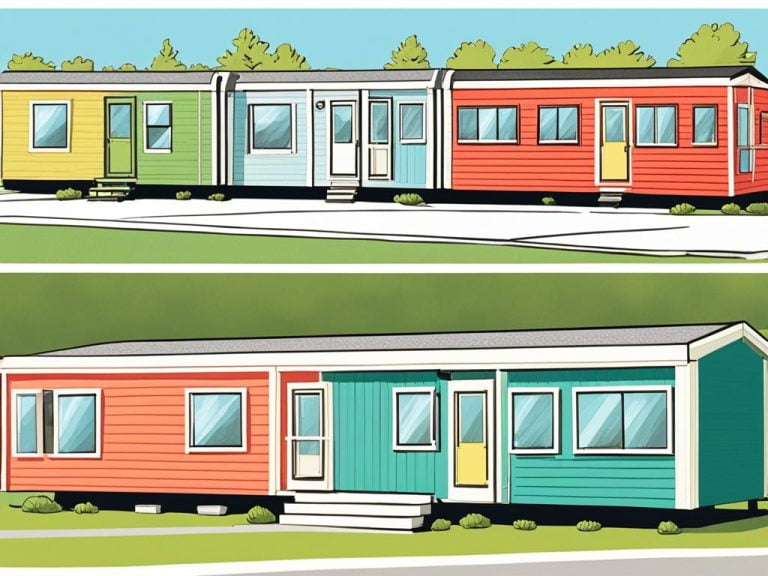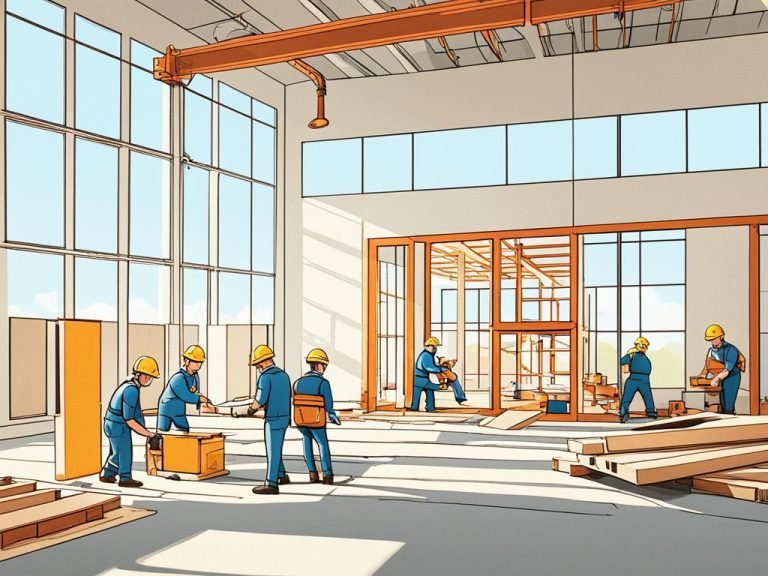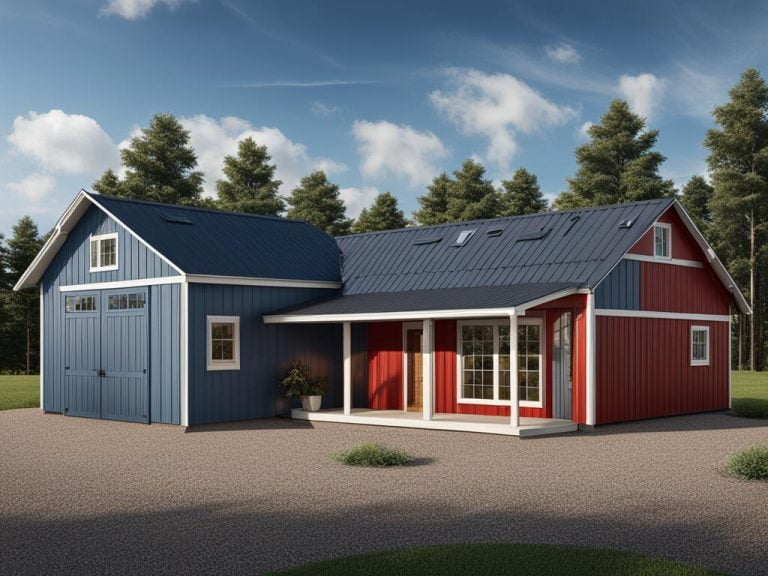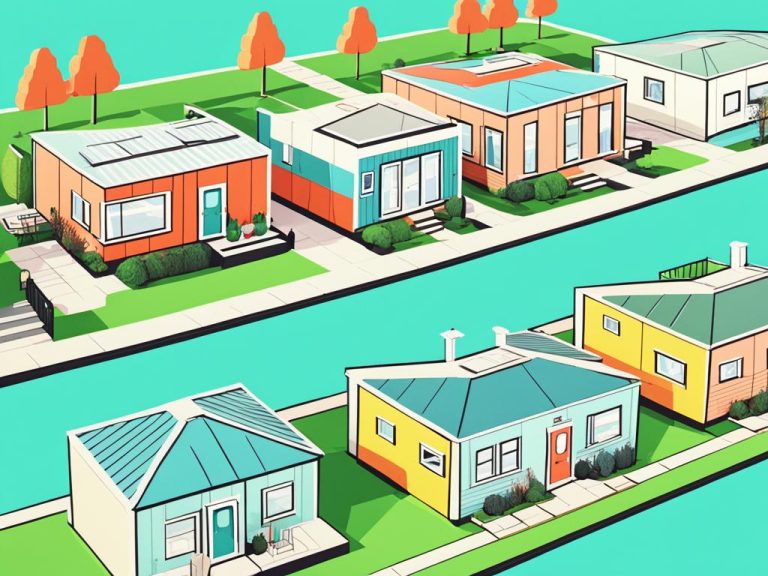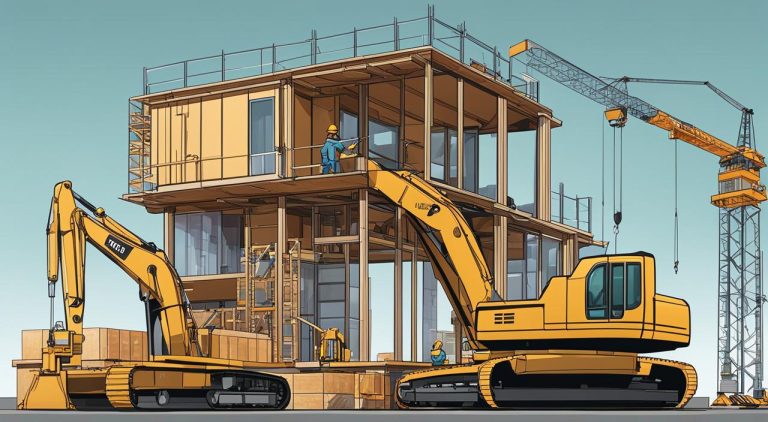How to Add a Prefab House in Your Backyard: Regulations and Legalities
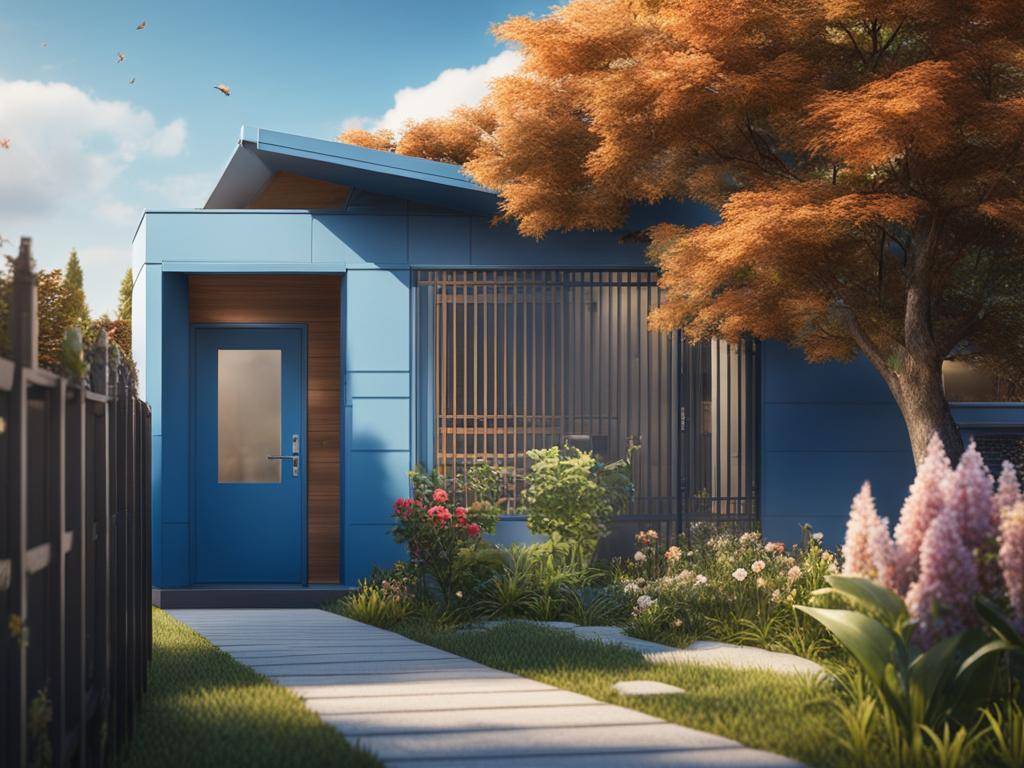
Prefab homes, also known as flat-pack homes or kit homes, offer design flexibility and the ability to incorporate new technologies. In the UK, these homes have a rich history and were initially seen as a temporary solution to the post-war housing crisis. Today, prefab homes have evolved and are a popular choice for self-builders.
However, before adding a prefab house to your backyard, it’s crucial to understand the regulations and legal requirements involved. Planning permission is required, and each local authority has its own specific regulations and zoning laws. To determine the exact requirements for your area, contact your local residential permitting department.
Additionally, finding suitable land and obtaining financing for your prefab home are important factors to consider. You need to ensure that the land complies with zoning laws and has access to necessary utilities. When it comes to financing, there are options available such as self-build mortgages and government schemes like the Help to Build equity loan scheme.
Key Takeaways
- Prefab homes are constructed in separate parts in a factory and then assembled on-site.
- Planning permission is required for adding a prefab house to your backyard, and each local authority has its own regulations.
- Finding suitable land and obtaining financing are crucial considerations when adding a prefab home to your backyard.
- Prefab homes offer design flexibility, energy-saving benefits, and value for money.
- With careful planning and research, you can successfully add a prefab house to your backyard and create the home of your dreams.
What is a Prefab Home?
A prefab home, also known as a flat-pack home or kit home, is a house that is constructed from individual components in a factory and then assembled on-site. Prefab homes offer design flexibility and the ability to incorporate new technologies. They have become a popular option for self-builders in the UK.
Prefab homes are different from mass-produced houses as they are custom made and can be more individualized. They have come a long way since their post-war origins as a temporary housing solution. Today, prefab homes are built to high standards of construction and longevity.
They can be installed in backyards and offer convenience, value for money, and energy-saving benefits. However, it is important to understand the regulations and legal requirements for installing a prefab house in your backyard.
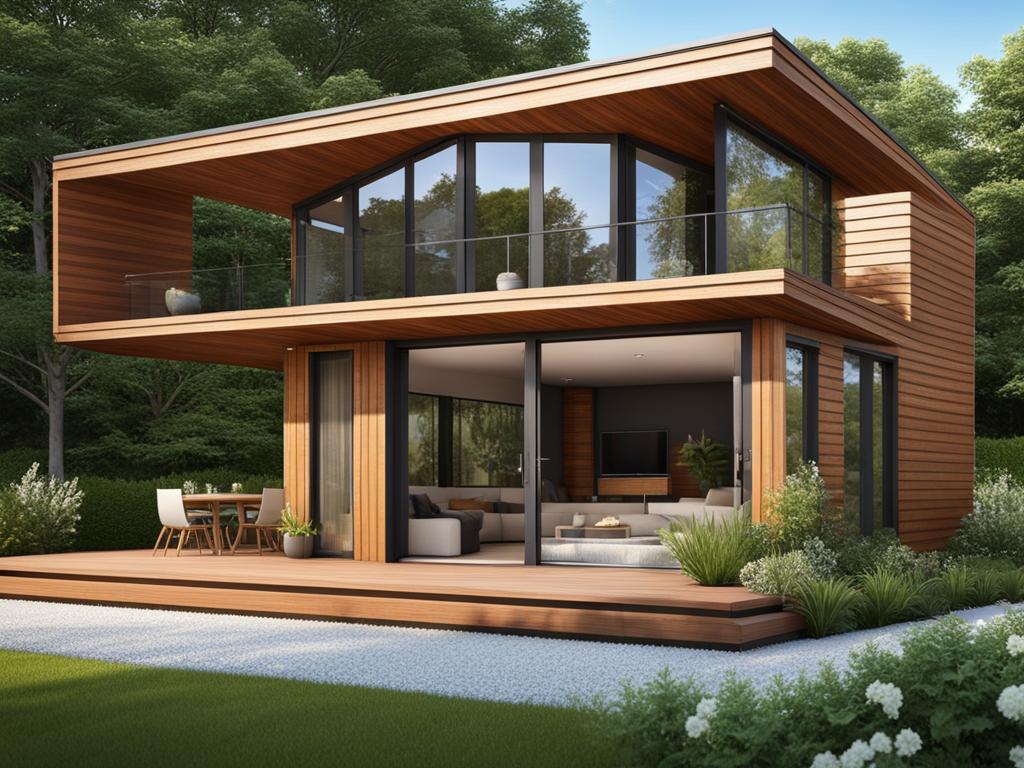
- Design flexibility
- Energy-saving benefits
- Custom made and individualized
- Built to high standards of construction and longevity
- Installation in backyards
History of Prefab Homes in the UK
After World War II, there was a housing crisis in the UK, and prefab homes were seen as a temporary solution. Over 156,000 prefab homes were built across the country from 1946-1949. These houses were erected quickly and cheaply, often in estates. They offered modern amenities such as inside toilets and fitted kitchens and were designed with gardens where food could be grown. Some of the last remaining prefabs have been given listed status and can be seen in museums. In a further attempt to increase housing stock, local authorities built permanent prefab homes from pre-cast reinforced concrete. From the end of the war until 1955, around 500,000 of these were constructed. Prefab homes have evolved since then and are now a popular choice for self-builders.
Advantages of Prefabricated Homes
Prefabricated homes, also known as prefab homes, offer several advantages over traditional construction methods. These homes are manufactured offsite in a factory, ensuring high-quality construction and precise measurements. As a result, the construction process is quicker and more efficient compared to traditional building methods.
One of the main benefits of prefab homes is their quick assembly. Once the components are delivered to the build site, the home can be assembled in a relatively short amount of time. This saves both time and money, making prefab homes an attractive option for those looking to build a house quickly.
Reduced Material Waste
Prefabricated homes also generate less material waste compared to traditional construction. Since the components are manufactured in a factory, measurements are precise, and there is less room for error. This leads to optimized material usage and less waste on the construction site.
Design Flexibility
Another advantage of prefab homes is the design flexibility they offer. Self-builders can customise their homes to fit their budget and lifestyle. Whether it’s selecting the layout, finishes, or additional features, prefab homes provide the opportunity to create a personalised living space.
Cost-Effective Solution
Prefabricated homes are also a cost-effective solution for homeowners. With streamlined manufacturing processes and reduced material waste, prefab homes often come at a lower price point compared to traditional construction. This makes them an affordable option for those looking to build their dream home on a budget.
Energy-Saving Benefits
Energy efficiency is another advantage of prefab homes. With advanced insulation and modern construction techniques, prefab homes are designed to be energy-efficient. This can result in lower energy bills and a reduced carbon footprint.
Furthermore, prefab homes can be customised to meet individual specifications and preferences. Whether it’s choosing sustainable materials or incorporating smart home technology, prefab homes can be tailored to suit the homeowner’s needs.
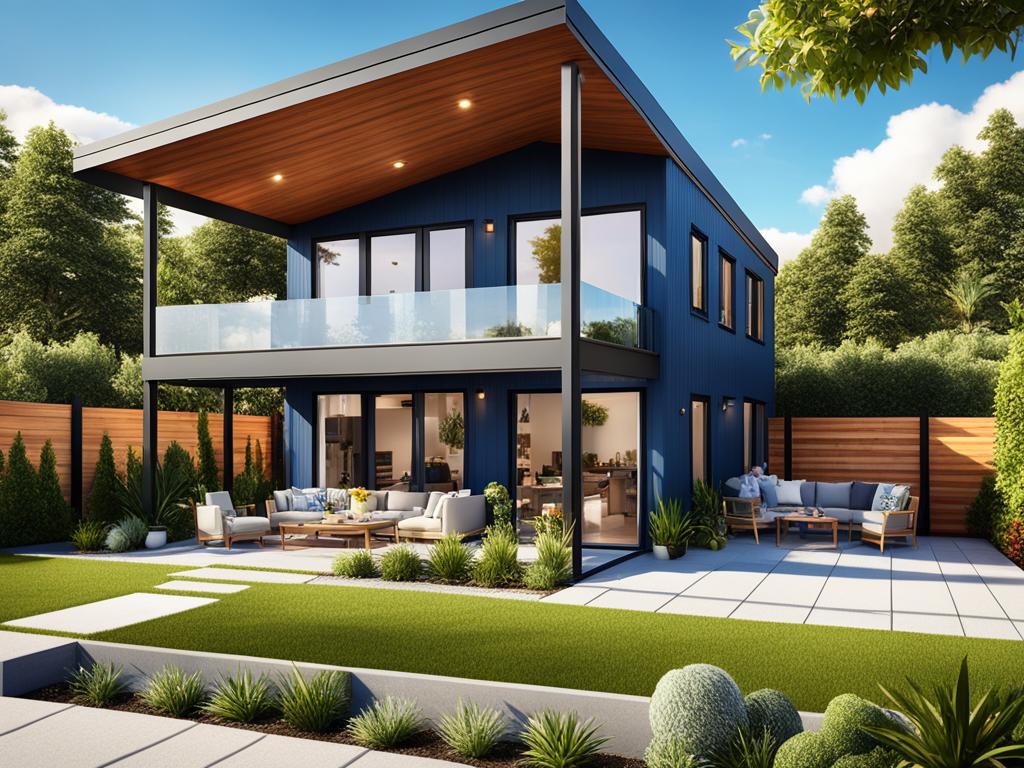
Overall, prefab homes offer a range of benefits, including high-quality construction, quick assembly, reduced material waste, design flexibility, cost-effectiveness, and energy-saving benefits. These advantages make prefab homes an appealing option for those considering adding a house to their backyard.
Planning Permission for Prefab Homes
Installing a prefab home in your backyard requires planning permission to ensure compliance with local regulations and legal requirements. Each local authority has its own specific rules and regulations related to prefab houses. To determine the regulations for prefab houses in your backyard, it is essential to contact your local residential permitting department.
A planning appraisal is a crucial initial step to assess the feasibility of building a prefab house on your land. This appraisal will help you understand the zoning laws, size restrictions, and design guidelines that apply to your area. Collaborating with a prefab home manufacturer or contractor can provide valuable guidance throughout the planning process. They can help create a design that meets the requirements of your local authority, ensuring your prefab home complies with all planning regulations.
It is crucial to ensure your prefab home design aligns with the regulations set by your local authority before proceeding with the installation. Complying with these regulations will ensure a smooth and legal process for adding a prefab house to your backyard.
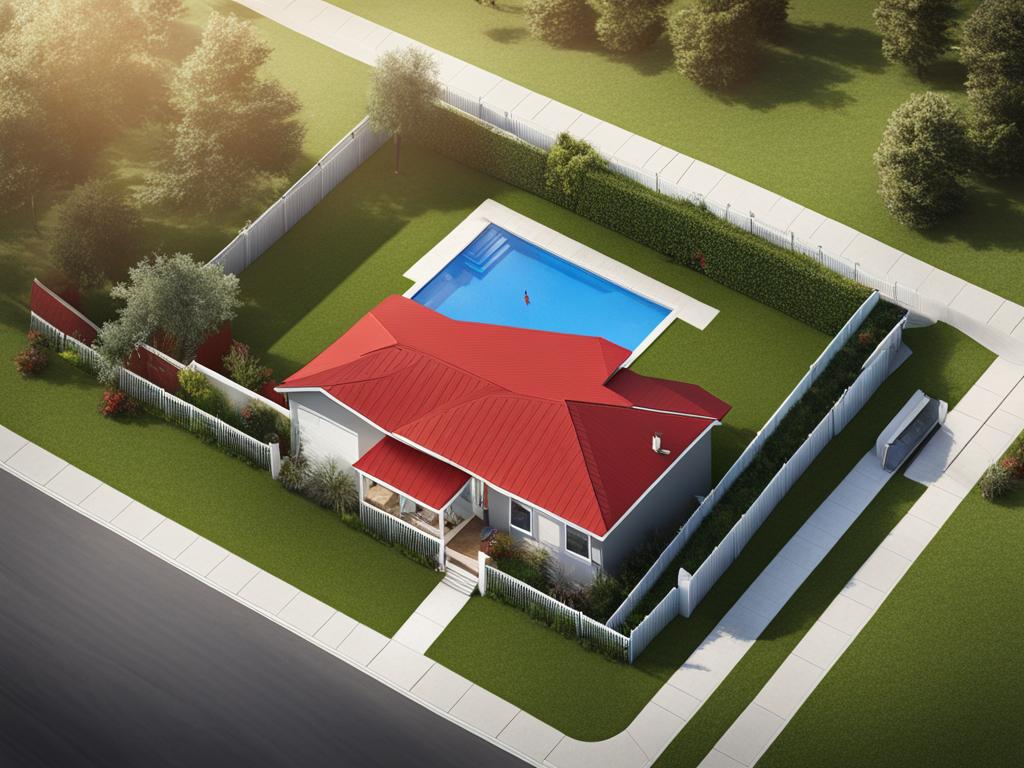
Finding Suitable Land for a Prefab Home
Finding suitable land is an important factor when considering installing a prefab home in your backyard. You need to ensure that the land is suitable for building and that it complies with zoning laws and regulations. It is also necessary to consider access to utilities such as water and electricity.
There are various resources available to help you find land for a prefab home, such as local real estate agents, online listings, and land search websites. Some prefab home manufacturers may also offer assistance in finding suitable plots of land.
Thorough research and assessment of the suitability of the land is crucial before proceeding with the installation of a prefab home.
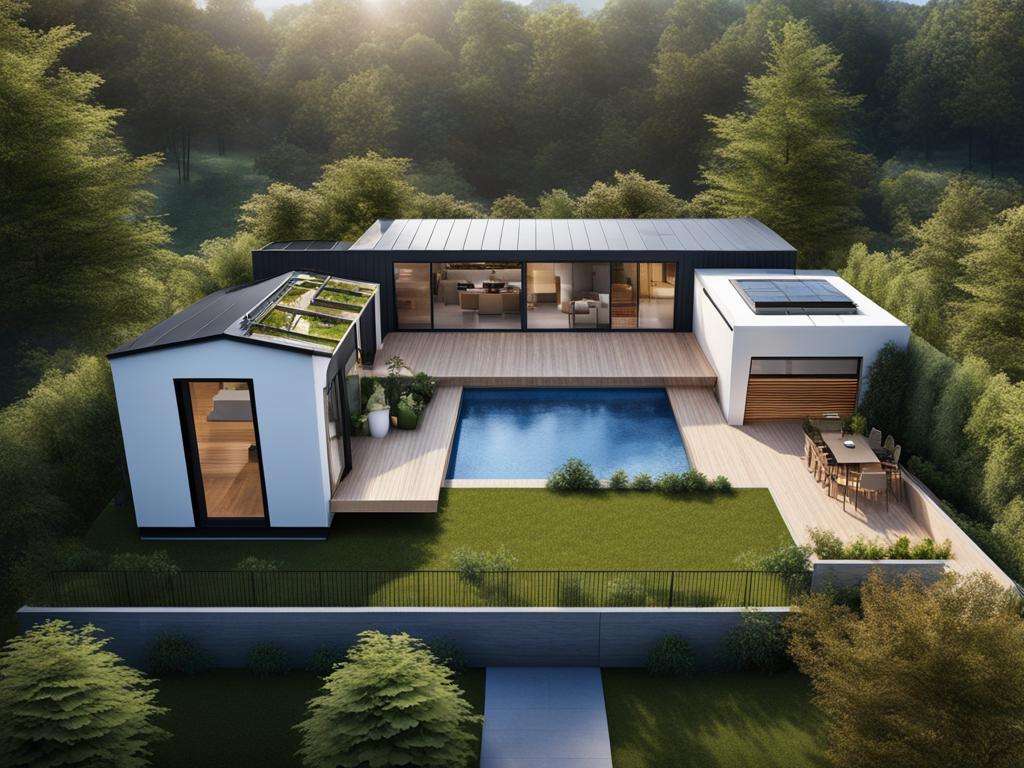
Factors to Consider
- Location: Consider the proximity to amenities, schools, and transportation.
- Zoning Laws: Ensure the land is designated for residential use and permits the installation of a prefab house.
- Utilities: Check the availability of water, electricity, and sewer connections.
- Land Suitability: Assess if the land is suitable for building and meets any geological or environmental requirements.
- Access: Evaluate the accessibility of the plot and any potential driveway or road construction required.
By considering these factors and conducting thorough research, you can find suitable land for your prefab home and lay the foundation for a successful installation.
Financing a Prefab Home
Financing plays a crucial role in the installation of a prefab home in your backyard. Fortunately, there are mortgage options available specifically for prefab homes, and specialist self-build mortgage brokers can provide the financing assistance you need. Typically, these mortgages cover up to 75% of the land and build costs, giving you the financial support necessary to make your prefab home a reality.
While interest rates for self-build mortgages may be slightly higher than those for standard residential mortgages, it’s important to keep in mind that once the construction is complete, many individuals choose to remortgage with a regular residential lender for more favorable rates. When exploring financing options, it’s recommended to seek expert financial advice to ensure you make well-informed decisions and consider any restrictions or requirements that lenders may have, such as the choice of cladding or design restrictions.
In addition to traditional mortgage options, the government also offers schemes to support self-builders, such as the Help to Build equity loan scheme. These schemes aim to make financing more accessible and affordable for individuals looking to build their own prefab homes in their backyards.
Advantages of Financing a Prefab Home:
- Mortgages specifically tailored for prefab homes
- Cover up to 75% of land and build costs
- Opportunity to remortgage with regular residential lenders after construction
- Government schemes like the Help to Build equity loan
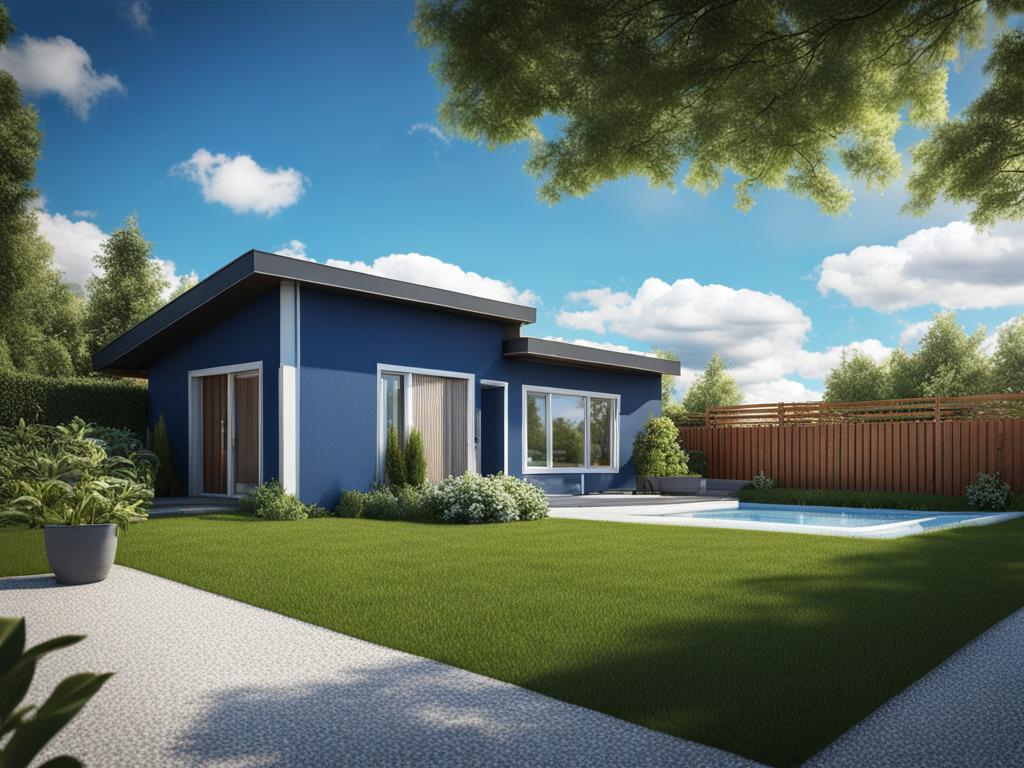
Conclusion
Prefab homes provide a convenient and cost-effective solution for adding a house to your backyard in the United Kingdom. With their design flexibility, energy-saving benefits, and value for money, prefab homes have become a popular choice for self-builders. However, it’s crucial to understand the regulations and legal requirements associated with installing a prefab house.
To begin, planning permission is necessary, and it’s important to consult your local authority for their specific regulations. Each local authority has its own rules that you must adhere to. Additionally, finding suitable land and securing financing are essential considerations. Ensure that the land meets zoning laws and has access to utilities like water and electricity.
Despite the initial challenges, prefab homes have significantly evolved since their post-war origins. By carefully planning and conducting thorough research, you can successfully install a prefab house in your backyard and create the home of your dreams. Take advantage of the benefits they offer and enjoy the flexibility, cost-effectiveness, and energy efficiency of a prefab home.
FAQ
Can I put a prefab house in my backyard?
Yes, you can install a prefab house in your backyard, but you need to obtain planning permission and comply with local regulations.
What are the regulations for prefab houses in backyard?
The regulations for prefab houses in backyards vary depending on your local authority. It is necessary to contact your local residential permitting department to determine the specific rules for your area.
What are the legal requirements for backyard prefab houses?
The legal requirements for backyard prefab houses include obtaining planning permission, complying with building regulations, and meeting local authority guidelines.
What are the zoning laws for prefab houses in backyard?
Zoning laws for prefab houses in backyards also vary by location. It is important to consult with your local residential permitting department to understand the specific zoning laws and regulations that apply to your area.
What is a prefab home?
A prefab home, also known as a flat-pack home or kit home, is a house that is constructed from individual components in a factory and then assembled on-site.
Can I install a prefab house in my backyard?
Yes, you can install a prefab house in your backyard, but it is important to obtain planning permission and ensure compliance with local regulations.
What is the history of prefab homes in the UK?
Prefab homes in the UK originated as a temporary housing solution after World War II. Over 156,000 prefab homes were built between 1946-1949 to address the housing crisis. Today, prefab homes have evolved and become a popular choice for self-builders.
What are the advantages of prefabricated homes?
Prefabricated homes offer several advantages, including high-quality construction, design flexibility, quicker assembly, reduced on-site waste, cost-effectiveness, energy-saving benefits, and customization options.
Do I need planning permission for a prefab home?
Yes, planning permission is required for installing a prefab home in your backyard. Each local authority has its own regulations and requirements, so it is necessary to contact your local residential permitting department to determine the specific rules for your area.
How can I find suitable land for a prefab home?
To find suitable land for a prefab home, you can consult local real estate agents, search online listings and land search websites, or seek assistance from prefab home manufacturers who may offer guidance in finding suitable plots of land.
How can I finance a prefab home?
Financing options for a prefab home include mortgages, with specialist self-build mortgage brokers offering suitable options. It is important to seek expert financial advice and consider any restrictions or requirements that lenders may have.
Can I put a prefab house in my backyard?
Yes, you can put a prefab house in your backyard with proper planning, obtaining planning permission, finding suitable land, and securing financing. Prefab homes offer convenience, value for money, and energy-saving benefits, making them a popular choice for self-builders.

